The Death Trap
Photos by the author
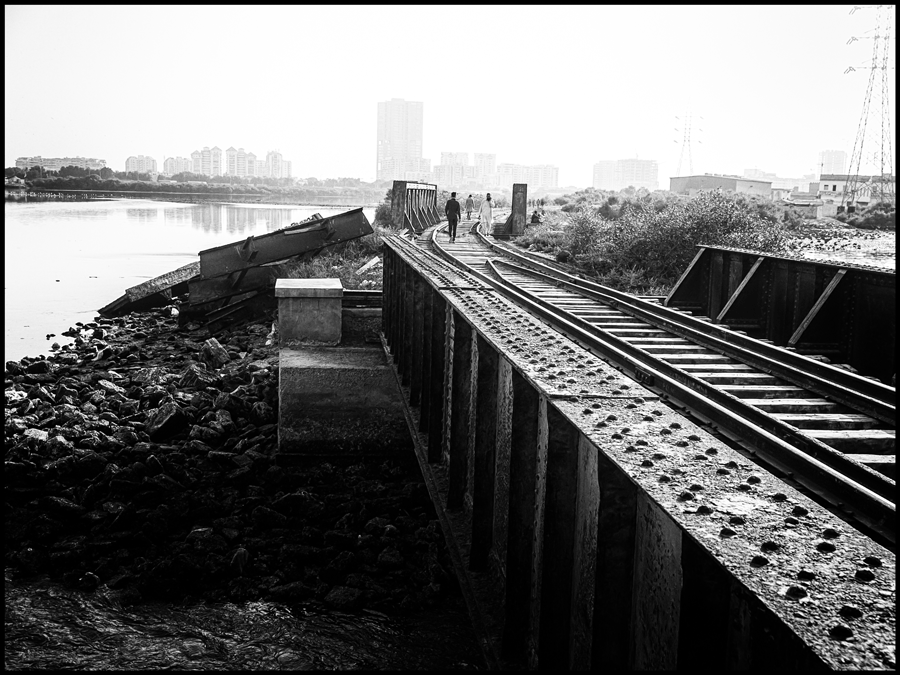
Driving from Clifton in Karachi, take the Mai Kolachi bypass road. There is a rail crossing at about 200 yards. Take a left and park your car on the broken service road. Walk along the rail tracks and you will soon see a steel bridge. Men, young and old, carrying wares or their shoulder, others dragging their bicycles or motorcycles, young children, women, families are all crossing the bridge. But as you walk closer to the bridge, you discover the horrifying the condition of this structure.
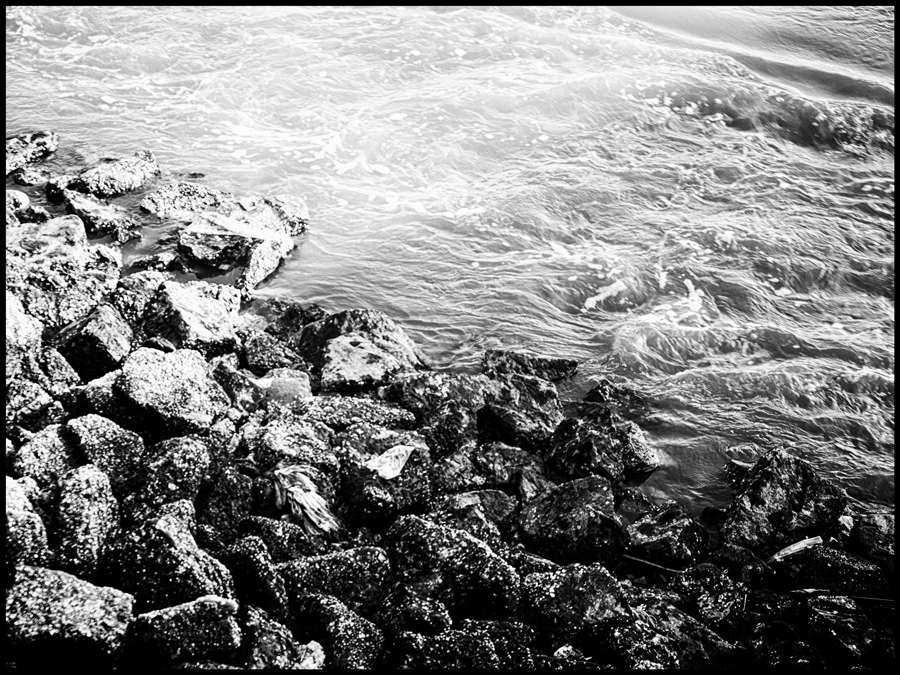
The bridge is constructed over a ravine, in which water flows fast when it rains. This a ten feet drop from the bridge. The ravine is filled with filthy water and lined with rocks. A fall from the bridge is certain to result in death. Now try crossing the bridge. You will immediately notice that there are a foot-wide gaps between the slats from where you can see the rushing water below. One misstep and you will plunge to your death. There are about thirty such deadly openings and there are no handrails to hold on to. The bridge is used by the residents of Shireen Jinnah colony, one of the poorest localities of Karachi. The residents use it to cross over to the Mai Kolachi bypass where they get on a bus to go to Saddar in one direction or to Defence and Clifton in the other. Mostly, they are vendors carrying small items like balloons, flowers, hand towels that they sell on the streets of affluent neighbourhoods.
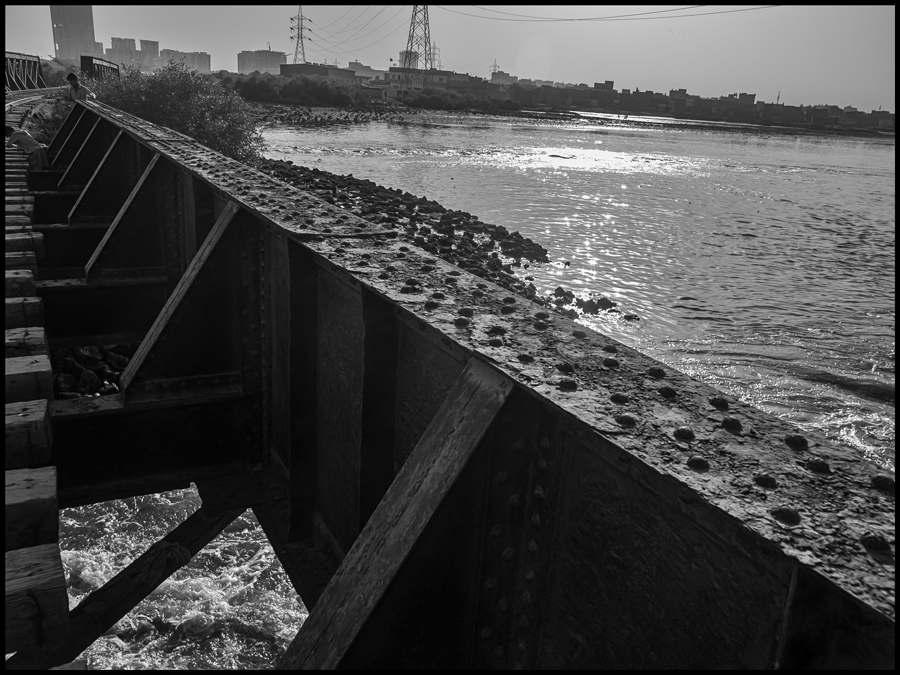
I am fearful of asking if any accidents have happened here. Still, I pick up courage and inquire from one of the children. “Yes, recently a child and a man plunged to their death.” I shudder to think what it would be like to cross this death trap at night as there are no lights.
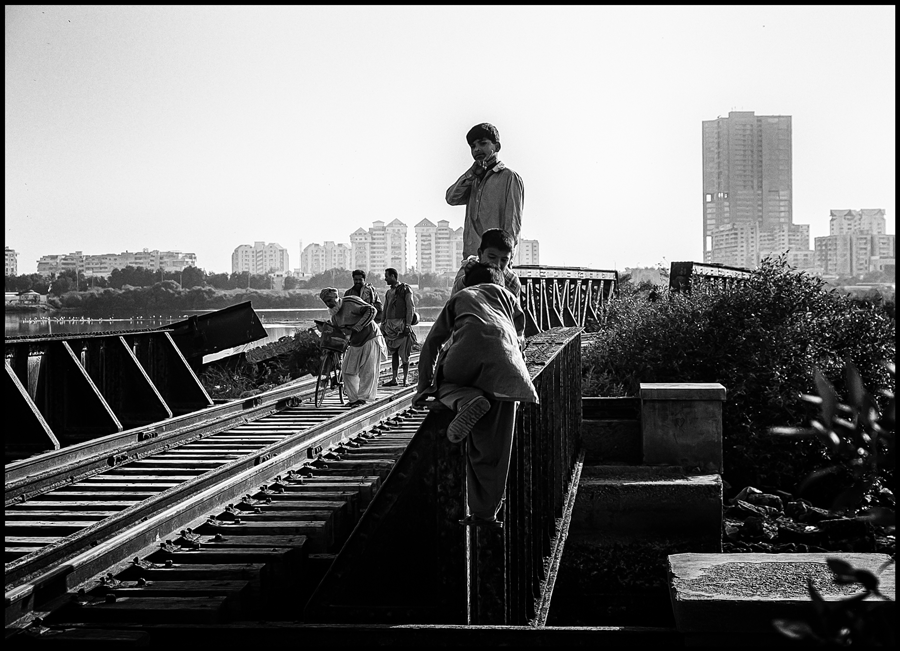
The children of the colony are playing on the bridge as if it is a feature in an amusement park. Indifferent to the danger, they dare each other to climb the structure. One boy hangs from the edge and shouts, “Uncle, Uncle, I am falling, help me!” All the kids laugh. I guess when you live on the fringe, safety becomes a humorous concept.
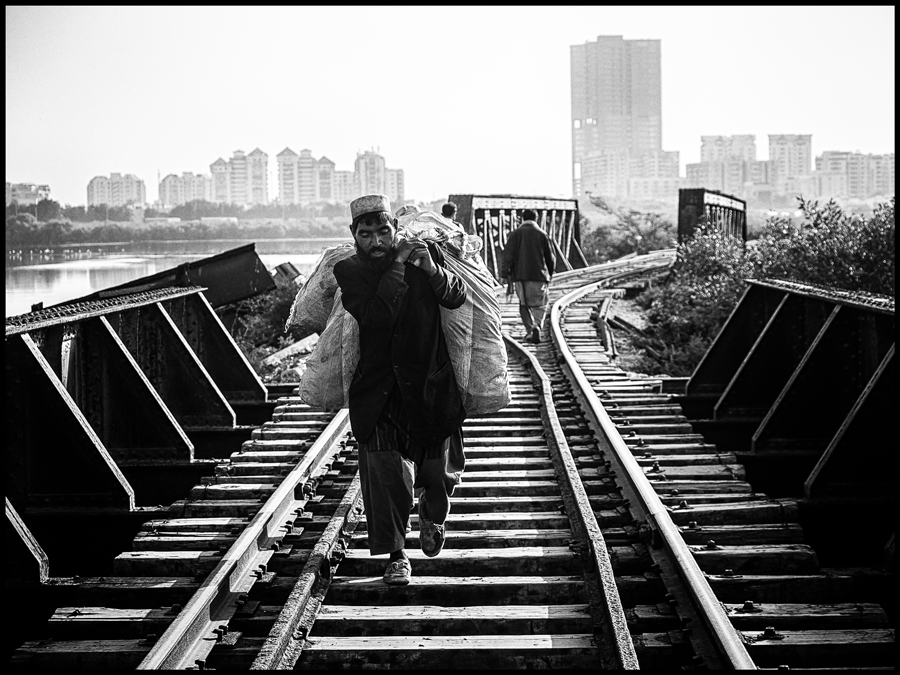
I cross the bridge with my heart in my mouth. My legs are not as steady as they used to be and I fear a dizzy spell. On the other side the land is littered with debris. Garbage dumps with lit piles of rubbish, filth, and other signs of naked poverty are all around. Surprisingly I see a huge railway locomotive on the track. Apparently it crosses the bridge once a day. I ask some men if anything has been done to make the bridge safe. They reply indifferently that once some iron sheets were put on it but drug addicts stole it. To my right are the brightly painted offices of the main political parties. They are locked. I ask the men if the MNA and MPA of the area have done anything to make the bridge safer. They laugh and say that the politicians come here only during election time and are never seen again.
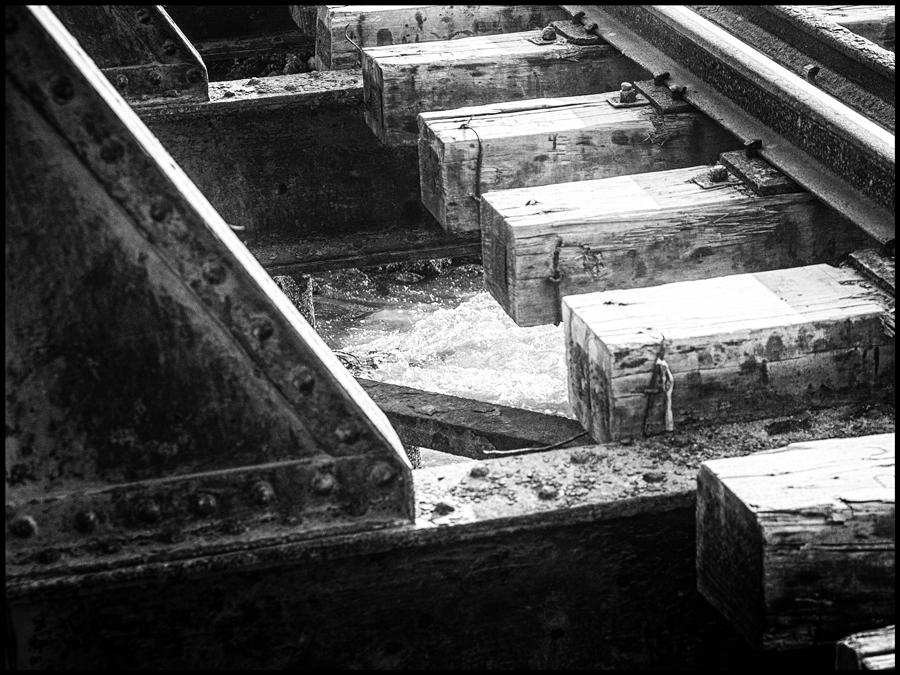
Maybe tomorrow, another child, another old man or woman will fall from the bridge and die. No one except the family will shed a tear. Politicians will come visit near the next elections and the city authorities have probably never visited this bridge and they certainly did not bring their children with them to enjoy this amusement park.
All this while, the bridge lies in wait, silent and murderous, for its next victim.
The writer is an engineer by training and a social scientist by inclination.



